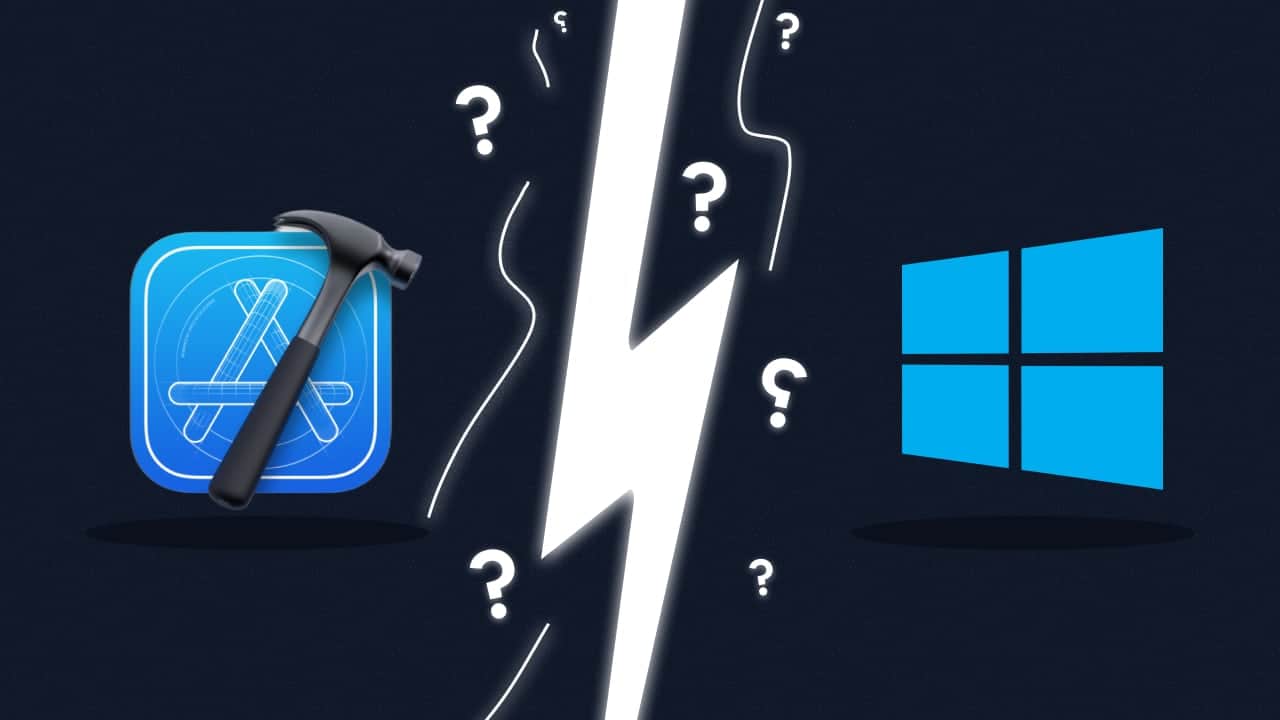
Written by Iñaki Narciso
If you wanted to develop iOS or macOS apps natively in Windows, you’re out of luck.
To develop apps natively for Apple platforms, you’ll need to install and set up Xcode which only runs on macOS. Xcode is an IDE (Integrated Development Environment), it’s an app that you can write Swift code to create an app, and run the app on an iPhone or iPad, or on an iOS simulator.
If you don’t have access to a Mac computer, there are a few workarounds that you can use to develop iOS and macOS apps on Windows. Here are some options:
Option 1: Use Virtual Machines
Set up a virtual machine on your Windows computer and install macOS on it. This will allow you to install and run Xcode and develop iOS and macOS apps as if you were using a real Mac. However, this option requires a powerful computer with a lot of RAM and processing power to run the macOS virtual machine smoothly.
Option 2: Hackintosh
A Hackintosh is a PC that runs macOS. Most modern PCs have Windows pre-installed, and this option requires you to set up macOS as a secondary operating system for your PC. This option can be challenging and time-consuming and may not work with all hardware configurations. Basically, if you need to set up a Hackintosh, you’ll need a PC with specs as close towards a Mac computer, as you’ll be depending on the Hackintosh community for installing hardware drivers.
Option 3: Cloud-based Development Environments
There are some cloud-based services like Macincloud and [VirtualMacOSX that offer a virtual Mac environment that you can use to develop your apps. These are paid services where you’ll need to purchase a subscription before you can access the service but are much cheaper than buying a new Mac computer. All you need when going for this option are:
- Your favourite web browser
- A paid subscription to access their services
- A stable internet connection
In the long run, it may be wise to invest in you’re own computer as using these services would continuously entail costs. The longer you’ll use these services, the more expensive they’ll take.
Option 4: Non-native Development Frameworks
Another alternative approach is to develop your apps on non-native development frameworks. This is especially true if you’re planning to develop for both iOS and Android.
Frameworks like React Native, Flutter, or using a Microsoft technology like Xamarin, will allow you to develop iOS/Android apps, but macOS app development may not be supported by these frameworks.
The benefit of using a non-native development framework is that you’ll have a single codebase for both mobile platforms. However, there might be some implications in terms of performance and user experience.
Performance and Functionality?
It’s worth noting that these workarounds may not provide the same level of performance and functionality as developing natively on a Mac, and they may not be suitable for complex or large-scale projects.
It’s generally recommended to use a Mac for iOS and macOS app development to ensure the best experience and results.
Mac computers are expensive, and while newer Macs (in Apple Silicon) are getting more affordable, a Mac computer is a good investment you’re going to make especially if you plan to seriously make your apps without compromising in performance and functionality.
If you’re looking for an affordable Mac computer, I would recommend getting the base M2 Mac mini. It’s a mini desktop but has better Xcode performance than older Intel macs.
If you’re looking for an affordable Mac laptop, I would recommend getting the base MacBook Air M1. You can also get the M2 model if you can afford it.
The base models of the new Apple Silicon Macs have more power and better performance compared to the older Intel Macs. You can check out Xcode Benchmarks so you can decide which model to buy especially when compile times are a factor of importance.
Are you looking to get started with iOS Development? Explore our huge library of iOS Development content catalogue to build the app you’ve always wanted.




